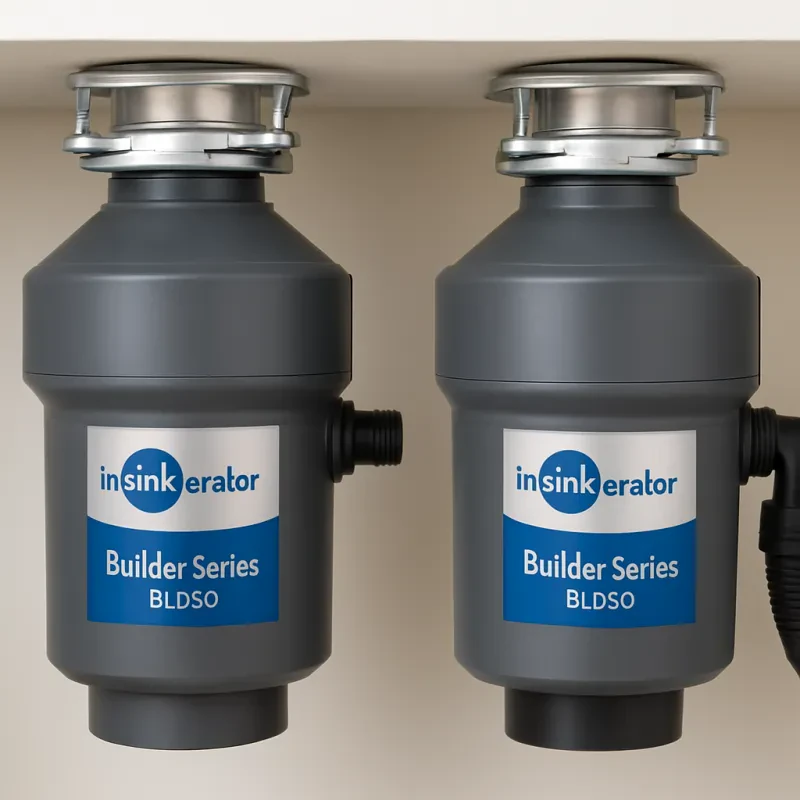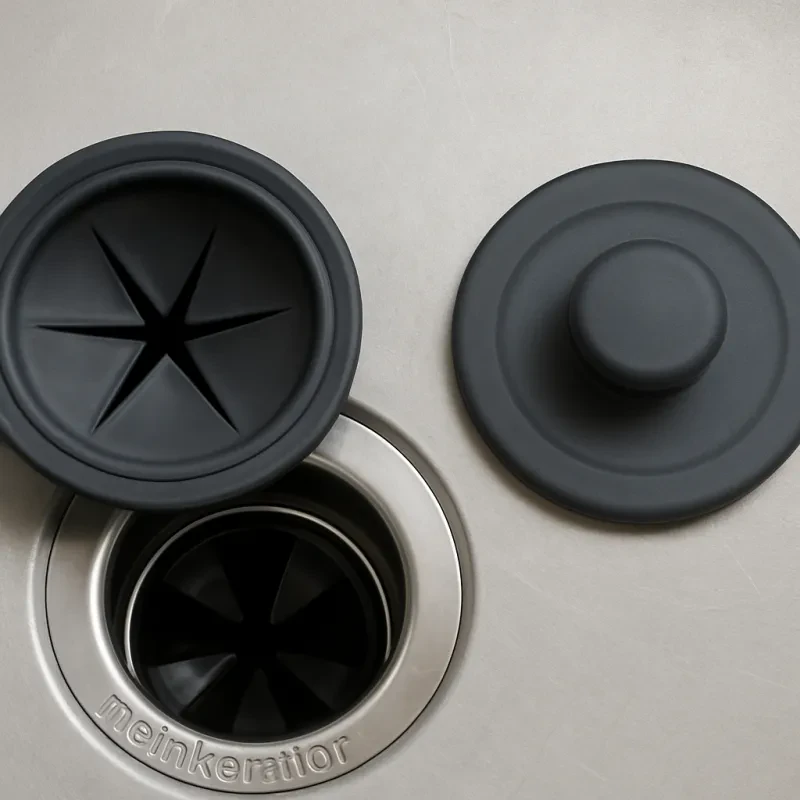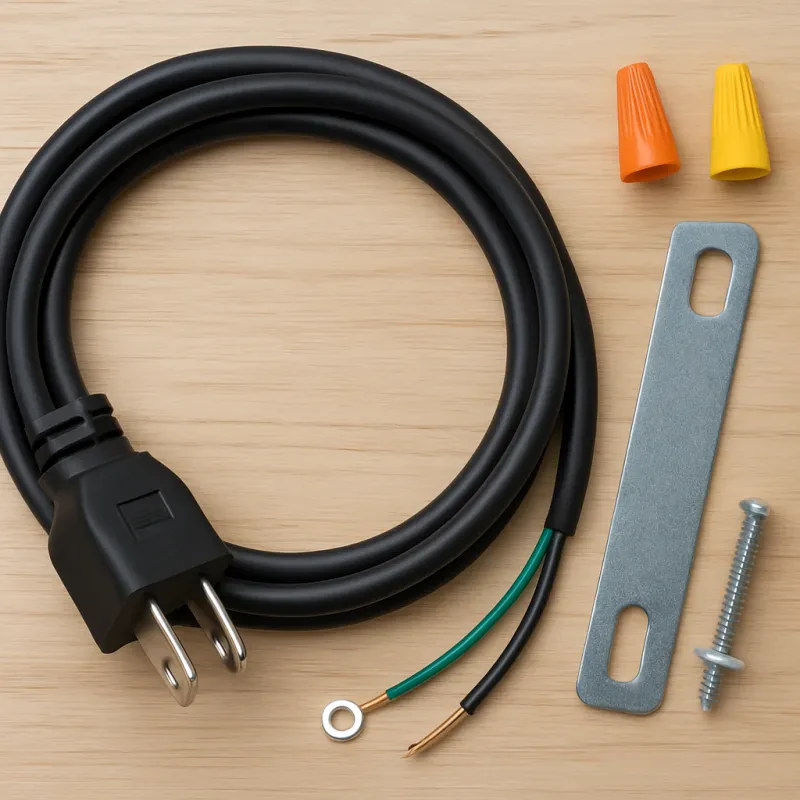A premium quality garbage disposer system can absolutely make an impact in your kitchen area. So much so that many new Insinkerator owners typically ask themselves just how they actually went without one!
Nevertheless, things can go wrong, like every piece of equipment with moving components. I want to show you the difference between legitimate garbage disposal issues and common old myths in this guide!
Ridiculous, misguided myths about garbage disposals can deter you from making the decision that has a formidable, positive impact.
With the help of over 80 years in the market, the friendly folks at Insinkerator have seen and heard them all!
Keeping that in mind, here are several simple facts to help you make better-informed selections.

Garbage Disposals Are a Waste of Water and Energy
On average, the energy used to operate a garbage disposal comes out to lower than $0.60 a year. Numerous research studies have determined that water use for a food waste garbage disposal averages over a gallon daily. In case that sounds like a lot, even some of the most efficient toilets use over a gallon of water every time they are flushed.
Using a Waste Disposal Unit Harms the Sewer System
More than two dozen studies worldwide have figured that even widespread garbage disposals' adoption does not negatively influence local sewer systems. Quite a few cities are concerned about the build-up of fats, grease, and oils, yet with or without a garbage disposal, cooking oil or leftover grease should certainly never be poured down the sink.
The majority of food fragments sent down garbage disposals are fruits, vegetables, and grains with very little or no fat. Even extensive use of garbage disposals causes only a mild rise in the total solid waste in community sewers.
Sewer lines Are for Water, Not Refuse
Sewer systems are developed to address waste: debris from street runoff, toilet tissue, etc. Extensive adoption of garbage disposals just marginally increases the amount of rubbish managed by sewer systems. As opposed to most of these things, food leftovers are largely water, which means they break down more quickly. Additionally, reducing the amount of waste that needs to get picked up saves municipalities money on pickup and garbage disposal costs.
I Can't Use a Garbage Disposal For I Have a Septic System 
This is a common one; nonetheless, it's still not true!
Garbage disposals grind food leftovers into a slurry that your septic system can easily take care of. Food scraps decompose quicker than other waste sent into the tank, and given that food scraps are 75% to 90% water, they add very little to the solids that land at the bottom.
Studies suggest that septic systems connected to a garbage disposal don't involve more frequent pumping than those that aren't. Most Insinkerator are septic system friendly. However, to place your mind at ease even further, we even have a unique model - the Insinkerator Evolution Septic Assist - made strictly for septic systems.
I Don't Need a Garbage Disposal Because I Compost
Garbage disposals are a year-round solution and can help composters address many of the challenges and shortcomings of composting. InSinkErator garbage disposals are powerful enough to grind un-compostable meat, bones, dairy, eggs, and things like citrus peels, onions, and garlic that can hinder valuable insects, worms, and bacteria from your compost pile. If leftover bread and pasta are catching the attention of undesirable pests, grinding those scraps can also help keep pests off your compost pile.
I Can't Grind That
Many people think that scraps that include chicken bones, eggshells, and potato skins can't or shouldn't be put down a garbage disposal. While this might be true for many competitor's products, InSinkErator garbage disposals can certainly handle many items others can not. InSinkErator repeatedly takes garbage disposals off the production line and puts them through thorough testing that includes grinding up a range of fruit and vegetable scraps and frozen beef bones and wooden blocks.
The "I can't grind that" myth follows the idea that garbage disposals operate like a blender, with spinning blades that can be dulled or clogged by stringy vegetables. The typical consumer isn't informed that garbage disposals don't come with blades-- they have lugs mounted on a spinning around a plate that continually forces food waste against a fixed grind ring.
What Legitimate Problems Should You Expect?
Machines are vulnerable to failure, and garbage disposals are no exception. Here are some of how your disposal could quite possibly give you trouble:
Racket
Your loud disposal may appear to be okay in the beginning. Still, once you've discovered what more quiet food waste disposers can do, the sound might start to irritate you.
1/3 and 1/2 HP units are the most likely to stress your ears. They are built to be economical, often without the sound insulation found in higher-end models.
It seems backward to some; the more substantial and more powerful the Insinkerator, the quieter it is! Because of the improved performance, quality, design, and added features, you definitely get what you pay for when it concerns Insinkerator sound levels!
Jamming
Gradually, these machines might get jammed. Even top-tier models built to be jam-free can, nonetheless sometimes break down. Hence you can imagine what might happen with the low or medium-priced units.
Thankfully, addressing jammed waste disposal is not overly troublesome. And if you comply with the user's manual thoroughly and avoid careless usage of your disposal, there should not be too much trouble.
Clogs
Garbage disposals are part of the kitchen sink drain pipes. And periodically, the sink clogs.
Clogs are often in the drain pipes instead of in the disposal itself, making the concern harder to fix than your typical jam. However, before you call for help, there are a couple of extra steps to try on your own.
Instructions And Recommendations From Manufacturers
Garbage disposals are built to partner with running cold water. Don't ever forget that. Water serves to lubricate the plate and impellers, making certain the ground food progresses straight through the chamber and the pipes.
Generally, running cold water is the initial step in using your disposal. After that, you run your disposal, place the food waste progressively into the machine, and shut down the disposal when grinding is complete. Ensure to run the water for several additional seconds to clear the drain line.
To keep your disposal functional, avoid pouring fat or grease down the disposal. It would be best if you also were careful to run only cold water when the device is in use. Do your best to stay away from grinding eggshells, bones, and fibrous materials, except if you're sure your machine can manage it.
Maintenance Instructions
After many months, food fragments might build up in the chamber of your garbage disposal and trigger a repulsive odor. If you locate a displeasing smell from the drainpipe, it's time to clean the disposal's interior.
Using the cleaning items endorsed by the manufacturer is a bit of a hit-and-miss. However, water and baking soda is typically a reliable cleansing agent.
Fill the sink halfway with warm water and mix in 1/4 cup of baking soda to use this method. Then, turn the disposer on and remove the stopper at the same time.
From time to time, you can scour the disposal's grinding chamber by grinding hard materials such as small bones or ice. Doing so will dislodge any potential remains from the grind ring and impellers. Ice helps solidify specific substances, making it easier to flush them out with water.
It's Time to Buy an Insinkerator!
You know you yearned for a shiny new Insinkerator garbage disposal unit ...
You got unnerved by a couple of silly myths about these units ...
And today, you've sorted all that stress out!
The only thing left is choosing the best InSinkErator model that serves you and grinding up that messy kitchen waste!
Browse Our Home Use InSinkErators!


